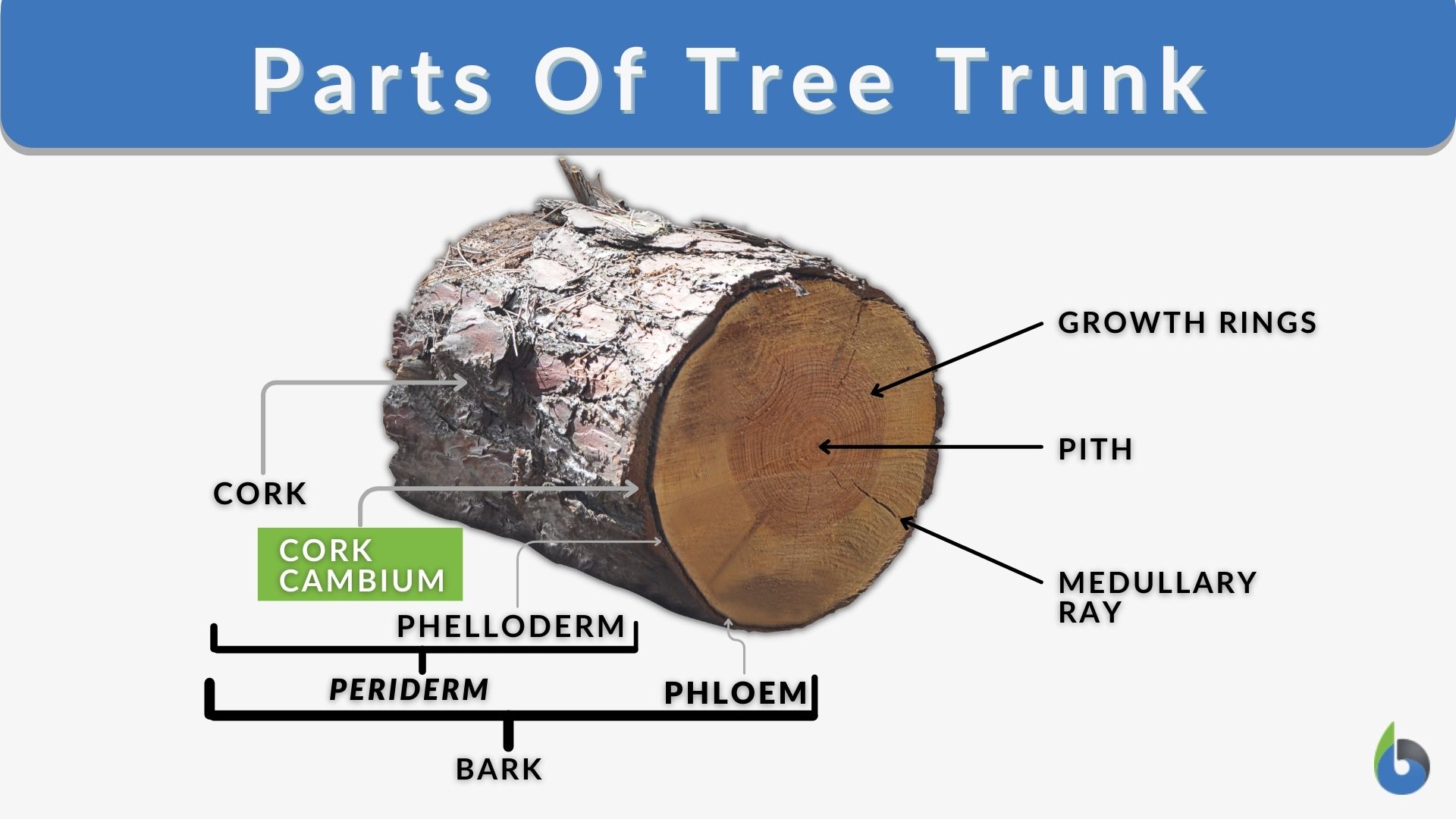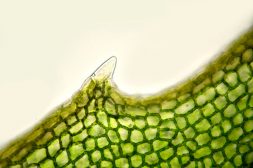
Cork cambium
n., plural: cork cambia
/kɔrk ˈkæmbiəm/
Definition: A lateral meristem involved in secondary growth
Table of Contents
Cork Cambium Definition
Cork cambium is a secondary meristematic tissue that has a pivotal role in secondary growth in plants, especially woody plants. It is responsible for giving rise to cork cells (phellem cells). Cork cells are specialized cells that are “dead” at maturity and form the outermost layer of the bark of woody plants, such as trees.
As the cork cambium gives rise to cork cells, this leads to a gradual buildup of cork layers over time. This layer of cork cells is essential to plants. They are durable and impermeable to water and gases. These features of the cork cells enable them to protect the inner, more susceptible tissues. They serve as an effective barrier against desiccation and dehydration.
Meristematic tissues overview
A cork cambium belongs to one of the two main types of meristematic tissues found in many vascular plants — the secondary meristem (the other is the primary meristem). Meristems are plant tissues made up of undifferentiated cells that are actively dividing. They give rise to cells that will later differentiate, and take up a definitive role, e.g., as part of the leaf, stem, root, etc.
The secondary meristem is responsible for lateral growth whereas the primary meristem is mainly for vertical growth.
While the cork cambium forms new cork cells for the outermost covering of the woody trunk and stem, there is another secondary meristem that gives rise to cells for lateral growth — the vascular cambium.
The vascular cambium (located between the vascular tissues, primary xylem and the primary phloem) is responsible for the production of the secondary tissues, secondary xylem and secondary phloem cells. These cambia (plural of cambium) contribute to the expansion of the plant’s girth, a process called secondary growth, which is distinct from the primary growth responsible for the development of the primary plant body and tissues.
Because both the cork cambium and the vascular cambium are involved in lateral growth, they are also referred to as the lateral meristems.
Secondary Growth in Dicot Stem (by Biowiz):
Biology definition:
A cork cambium is a lateral meristem involved in secondary growth, producing cork cells to form protective tissue in the outer bark of stems and roots. As a meristematic tissue, cells of the cork cambium divide mitotically to give rise to new cells that form the cork (phellem) and the phelloderm. This outer layer plays a crucial role in shielding the plant from various environmental stresses and physical damage.
Etymology: The term “cork cambium” is derived from “cork,” referring to the tissue it produces, and “cambium,” indicating its meristematic nature.
Synonyms: phellogen; pericambium; bark cambium
Cork cambium overview
- Anatomy: Cork cambium cells are undifferentiated meristematic cells that will develop into cork cells.
- Location: Cork cambium is a specialized form of lateral meristem found typically just beneath the outer bark (cork), where its activities are most critical in providing protection and structural reinforcement to the plant.
- Main Functions:
- Cork cambium is responsible for producing cork cells, contributing to the formation of protective outer layers, often referred to as cork layers, in the stems and roots, especially of woody plants. Cork cells have a distinctively impermeable structure, enabling them to protect the inner tissues from water loss, pathogens, mechanical stressors, and other physical damage.
- Works with the vascular cambium in contributing to the plant’s overall expansion via lateral growth.
Function And Process
Initially, a young plant would have an epidermal layer (epidermis) that serves as an outer protective covering. The epidermis would then be replaced by a tougher outermost protective layer of the bark called a periderm.
The periderm layer consists of:
- The cork (also called phellem)
- The cork cambium (also called phellogen)
- The phelloderm (parenchyma cells, between the phellogen and the secondary phloem)
The cork cambium, being meristematic, gives rise to new cells. The new cells growing inwards form the phelloderm whereas the new cells growing outwards form the cork.
The cork (phellem) cells replace the epidermis in the roots and stems of certain plants. These cells eventually become dead at maturity and become filled with air or with materials, e.g. resins or tannins. The cork is relatively tougher than the epidermis and acts as a better protective barrier against water loss, pathogens, and mechanical injuries.

Importance
In nature
The cork cambium layers help mitigate the effects of climate change. They can remove carbon dioxide from the atmosphere and then store it in the plant’s tissues.
In the industry
The cork cambium produces the cork collected for industrial use, such as in the production of wine bottle stoppers, cork-based textiles, and insulation products. Research and environmental studies have eventually come up with strategies for sustainable harvesting practices. This is to ensure the longevity of cork oak forests when the corks are harvested periodically without harming the trees.
NOTE IT!
Cork Cambium and Carbon Sequestration
Carbon biosequestration is the process of sequestering and storing carbon in a carbon pool by living things. Plant life, such as forest trees, absorb carbon dioxide from the air and then assimilate it into their biomass as well as storing it in long-term carbon sinks, such as cork cambia. Thus, woody plants are essential “carbon sinks”, helping remove carbon dioxide from the atmosphere, which in turn, helps reduce the concentration of this greenhouse gas.
References
- Smith, A. B., & Johnson, C. M. (2022). Cork Cambium and Secondary Growth in Plants: A Review. Journal of Plant Biology, 45(2), 123-137.
- Botanical Society of America. (2023). Cork Cambium: An Essential Component of Woody Plant Anatomy. Retrieved from https://www.botany.org/research-resources/plant-anatomy-resources/cork-cambium
- Jones, P. R. (2021). Secondary Growth and Meristematic Tissues in Woody Plants. Annual Review of Plant Biology, 72, 235-256.
©BiologyOnline.com. Content provided and moderated by Biology Online Editors.




